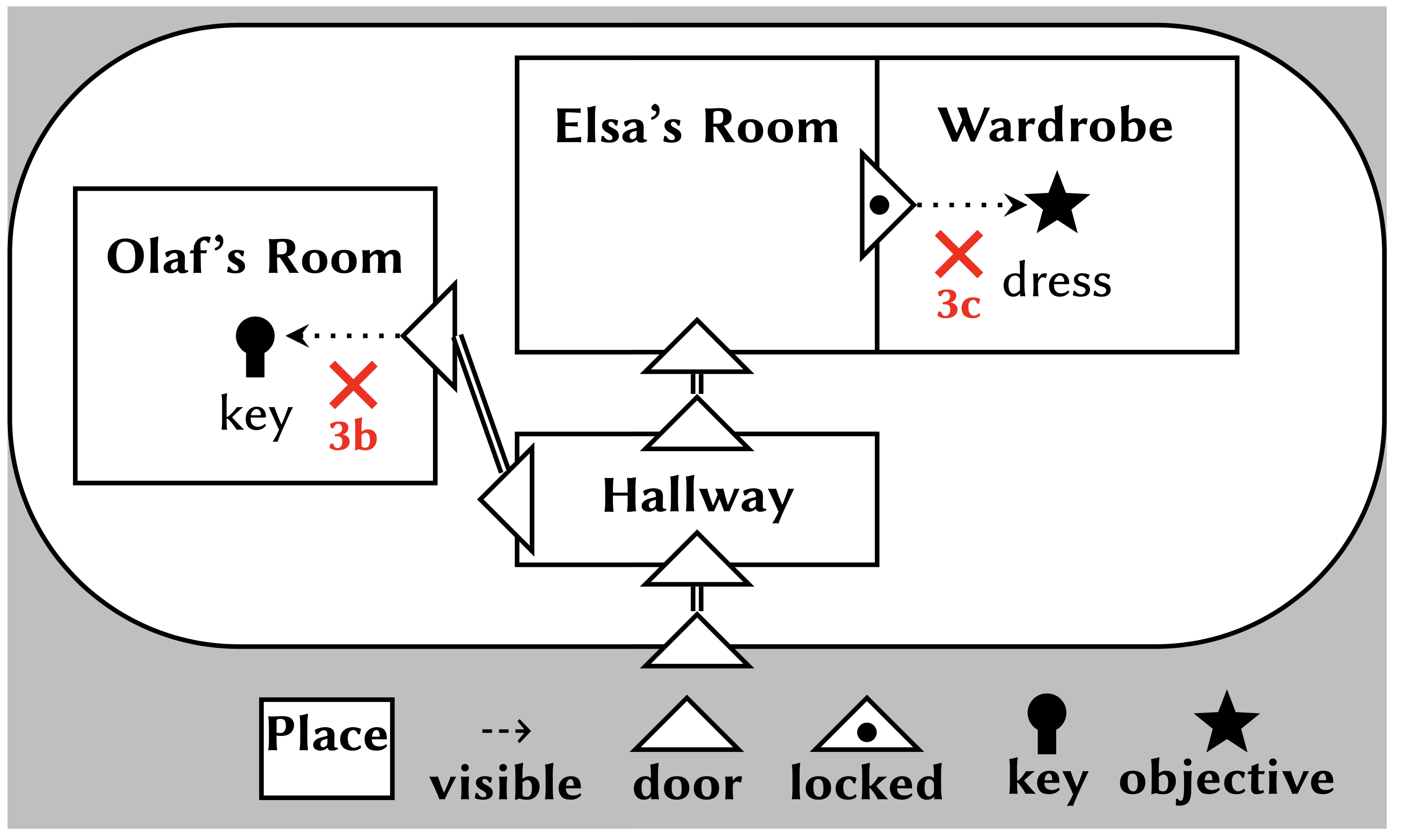Procedural Level Generation
Procedural level generation empowers level designers with tools for generating game levels. However, generating levels comes at the cost of level quality. We investigate how to create better generators and debuggers based on rewrite rules and blueprints.
Ludoscope. We study Ludoscope, a generator that has been developed and successfully applied in the Unexplored series by Ludomotion. In Ludoscope, level transformation pipelines step-by-steptransform level content, gradually adding detail, dungeons, enemies, encounters, missions, etc. These pipelines consist of grammar rules that work on content represented as tile maps, graphs, Voronoi Diagrams and Strings.
As part of our work on improving level generators, we have proposed two techniques for improving grammars to generate better game levels [4].
-
MAD. The first, Metric of Added Detail (MAD), leverages the intuition that grammar rulesgradually add detail, and uses a detail hierarchy that indicates for calculating the score of rule applications.
-
SAnR. The second, Specification Analysis Reporting (SAnR) proposes a language for specifying level properties, and analyzes level generation histories, showing how properties evolve over time.
The study of level generation has yielded several tool prototypes.
-
Ludoscope Lite. Tool prototype for analysis of levels and generators by Quinten Heijn [1]. Based on Rascal and Salix, the prototype implements MAD and SAnR and demonstrates the techniques are feasible. Ludoscope Lite is available on GitHub.
-
Ludoscope Mini. Tool for debugging level generators by Georgia Samaritaki [5]. Also based on Rascal and Salix, its aims are to raise the quality of level generators by improving debugging facilities. Ludoscope Mini is available on GitHub.

Current and Future Work
Mental Maps. We propose bridging the gap between designing level schematics and generating game levels using templates called Mental Maps [5, 6, 7].
Master projects and collaboration. As part of my work on Automated Game Design, I am open to new projects and collaborations on Procedural Content Generation.
Acknowledgements. We thank Joris Dormans (Ludomotion) for his continued collaboration in applied research on Procedural Level Generation.
References
- Quinten Heijn. “Improving the Quality of Grammars for Procedural Level Generation: A Software Evolution Perspective”. Master’s Thesis. University of Amsterdam, Aug. 2018
- Riemer van Rozen and Quinten Heijn. “Measuring Quality of Grammars for Procedural Level Generation”. In: Proceedings of the International Conference on Foundations of Digital Games, FDG 2018 – as part of the Workshop on Procedural Content Generation, PCG 2018. ACM, 2018. DOI: 10.1145/3235765.3235821
- Rosa Corstjens, Anders Bouwer, Joris Dormans, and Riemer van Rozen. “Wonderful Design: Applying Appraisal Theory to Procedural Level Generation”. In: Joint Proceedings of the AIIDE 2018 Workshops. Vol. 2282. CEUR WS. 2018. URL: https://ceur-ws.org/Vol-2282/EXAG_106.pdf
- Riemer van Rozen, Youri Reijne, Clement Julia, and Georgia Samaritaki. “First-Person Realtime Collaborative Metaprogramming Adventures”. In: Joint Proceedings of the AIIDE 2021 Workshops. Vol. 3217. CEUR WS. 2021. URL: https://ceur-ws.org/Vol-3217/paper20.pdf
- Georgia Samaritaki. “Debugging Grammars for Level Generation”. Cum laude. Master’s thesis. University of Amsterdam, Master of Software Engineering, Feb. 2022
- Riemer van Rozen, Georgia Samaritaki, and Joris Dormans. “Debugging Procedural Level Designs with Mental Maps”. In: In: Proceedings of the International Conference on the Foundations of Digital Games, FDG 2022 – as part of the Workshop on Procedural Content Generation, PCG 2022. ACM, 2022. DOI: 10.1145/3555858.3564252
- Daria Protsenko. “Improving Procedural Level Generation with Mental Maps”. Note: ongoing project. Master’s thesis. University of Amsterdam, 2024